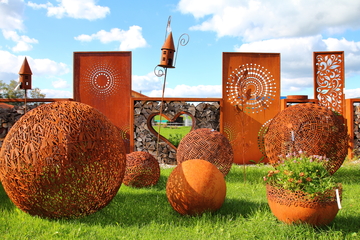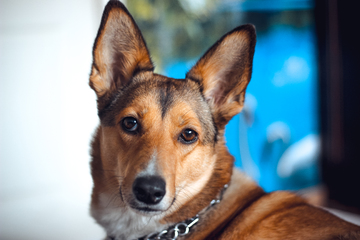





1. Download the latest version of zoombox from Github release page or you can directly download it from here.
2. Copy the
dest/js/zoombox.min.js file to your
path/to/zoombox.min.js
3. Copy the
dest/css/zoombox.min.css file to your
path/to/zoombox.min.css
4. Copy all the images from
dest/images/ to "images" folder of your root
directory.
Attach the
zoombox.min.css file at the top of the page in
<head> tag
<link rel="stylesheet" type="text/css" href="path/to/zoombox.min.css">
Attach the
zoombox.min.js file at the bottom of the page
before closing </body> tag
<script src="path/to/zoombox.min.js"></script>
Add attribute
zoombox to the img tag.
<img src="path/to/image" zoombox>All set ! Now you can click on the image !
You can add some additional attributes in
<img> tag discussed below.
1. Group Images : Just add the similar values for zoombox attribute to images that you want to group together. Example :
<img src="path/to/image1" zoombox="one">
<img src="path/to/image2" zoombox="one">
Another Group
<img src="path/to/image3" zoombox="two">
<img src="path/to/image4" zoombox="two">
2. Add Caption : Add caption of
the image using alt attribute Example :
<img src="path/to/image" alt="this is the caption" zoombox>
3. Add alternative image source : You can add source of larger image in
src2 attribute of that particular image to open
larger image in zoombox. Example :
<img src="path/to/image" src2="path/to/larger-image" alt="this is the caption" zoombox>
Use the method zoombox.option() to change the default
settings.
zoombox.option({
backgroundOpacity : 0.9,
imageTransTimimg : '.5s',
slideShowInterval : 2
});| Option | Default | Discription |
backgroundOpacity
|
Default : 0.9 (range between 0-1) | set the opacity for black backgroud of zoombox. |
imageTransTimimg |
Default : '.5s' | set the transition timing from one image to another. |
slideShowInterval
|
Default :2 (in seconds) | time interval between two images during the slide show in seconds. |
lockBodyScroll |
Default : true |
if set to false then body will continue to
scroll while scrolling on the zoombox.
|
enableZoomButton |
Default : false |
set it to true to get access to physical button
for zoom-in and zoom-out.
|
enableScrollZoom |
Default : 2 |
set it to 1 to turn off the scroll to zoom. set
this to 3 to enable area specific zoom using
mouse cursor. value 2 enables the center zoom
by default.
|
hideWatermark |
Default : false |
set it true to hide the watermark at top left
corner 'zoombox by Ashish Patel'.
|
enableTouchControl
|
Default : true |
if set to false it will block swipe left and
right for next and previous images in mobile phones.
|
enableNavigation |
Default : true |
if set to false navigation for next and
previous images including bottom preview images will be
removed. touch controls for next and previous images in
mobile will also be blocked.
|
enableSlideShow |
Default : true |
if set to false slideshow function will be
removed.
|
hasRoot |
Default : false |
Warning : set it
true if and only if you are working with local
server. setting it to true allows zoombox to use '/' before
the path of nav images. It means you can use zoombox in more
then one of your pages of website
|
zoombox.option({
backgroundOpacity : 0.9,
imageTransTimimg : '.5s',
slideShowInterval :2,
lockBodyScroll : true,
enableZoomButton : false,
enableScrollZoom : 2,
hideWatermark : false,
enableTouchControl : true,
enableNavigation : true,
enableSlideShow : true,
hasRoot:false,
});
Since zoombox scan for all the images that has
zoombox attribute in their <img> tag, so it works
fine for static website, but for dynamic site where the content
keeps loading even after dom loaded. So, those images which came
after the execution of zoombox script will not get added in the
zoombox even if they have the zoombox attribute.
The solution is to execute a function called
zoomBoxExecute() at a point where you think all the
images are loaded. So this will let the zoombox to scan for all
images once again which has the zoombox attribute in their <img>
tag.
//Asynchronous request to fetch more images and put them in the DOM
const xhr = new XMLHttpRequest;
xhr.open('get','get-images.php');
xhr.onload = ()=>{
//put all the images to the dom after fetching them from database
//.....
//.....
//.....
//after that
//call the zoomBoxExecute() funtion
zoomBoxExecute();
//this will scan all the images once again that has zommbox attribute.
}
xhr.send();1. Google Chrome
2. Safari
3. mozilla firefox
4. Microsoft Edge
5. Opera
6. iOS Safari
7. iOS Chrome
8. All Native Android Browser
Zoombox is licensed under MIT License.
Zoombox is free to use For both commercial and Non-commercial Work.
Attribution Required , which means you have to specify my name or link to my home page.
My name is allready specified in top left corner of the zoombox
UI by default. If you want to remove it and specify it somewhere
else you can remove it by calling
zoombox.option({}) method, and use
hideWatermark property from
options.
I would love your contribution in my github zoombox repository. Lets make it even more better